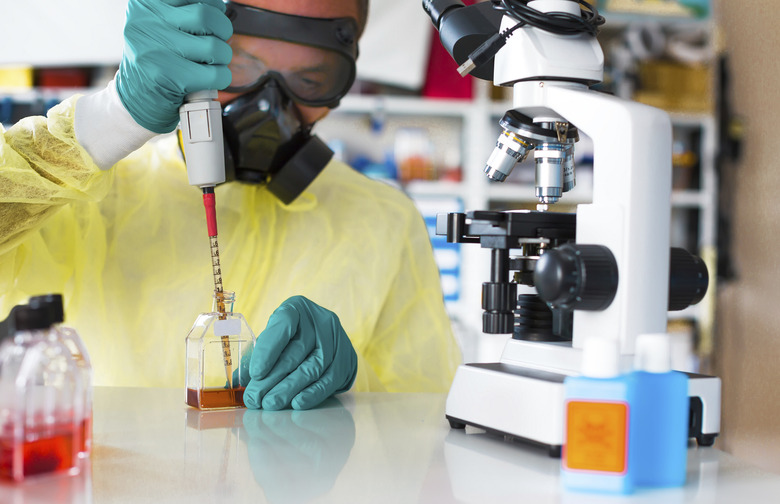What Are The Precautions To Remember When Using A Micropipette?
Micropipettes are pieces of laboratory equipment used to measure out precise volumes of solutions in quantities as small as .5 microliters. They allow the lab technician to collect a small sample from a larger batch of solution and then transfer that precise amount to a different area. That new area could be another solution for mixing purposes, a cell sample holder, microscope slide or many other places. Before doing any micropipetting, a lab technician should know the proper precautions to take to protect themselves from possible mistakes and keep the validity of the experiment intact.
Personal Protective Equipment
Personal Protective Equipment
Before handling any solutions in the laboratory which may be potentially hazardous to your health, you must don the appropriate personal protective equipment which can protect you. This may include, but is not limited to, latex gloves, goggles with side shields, head cap, water resistant apron or face mask. People observing the experiment or those in the laboratory at the time the micropipetting is occurring should also be wearing the appropriate protective gear.
Volume Dial
Volume Dial
Depending on the type of micropipette you are using, the volume dial may be set differently. A volume dial has three or four numbers on it. If you are using a P20 micropipette, for example, a reading of 022 means "2.2" microliters. On a P1000 micropipette, 022 means 220 microliters. Check to make sure you are using the right micropipette for your needed volume, and check the volume dial to make sure you are micropipetting the correct amount.
Tip
Tip
On many micropipettes, the tip is disposable. This allows for the micropipette to be used multiple times in succession without needing to clean and dry it each time. If your micropipette uses replaceable tips, make sure you are starting each new pipetting sequence with a new, clean tip. If your micropipette does not use replaceable tips, clean and dry the tip each time you measure out a new solution.
Receiving Liquid
Receiving Liquid
The solution into which the micropipetted solution is to be placed is often called the "receiving liquid." Do not allow the tip of your micropipette to touch the receiving liquid. Some of the liquid may be drawn back up into the micropipette, contaminating your sample for the remainder of the micropipette sequence.
Cite This Article
MLA
Richert, Bailey. "What Are The Precautions To Remember When Using A Micropipette?" sciencing.com, https://www.sciencing.com/precautions-remember-using-micropipette-10071443/. 24 April 2017.
APA
Richert, Bailey. (2017, April 24). What Are The Precautions To Remember When Using A Micropipette?. sciencing.com. Retrieved from https://www.sciencing.com/precautions-remember-using-micropipette-10071443/
Chicago
Richert, Bailey. What Are The Precautions To Remember When Using A Micropipette? last modified March 24, 2022. https://www.sciencing.com/precautions-remember-using-micropipette-10071443/
